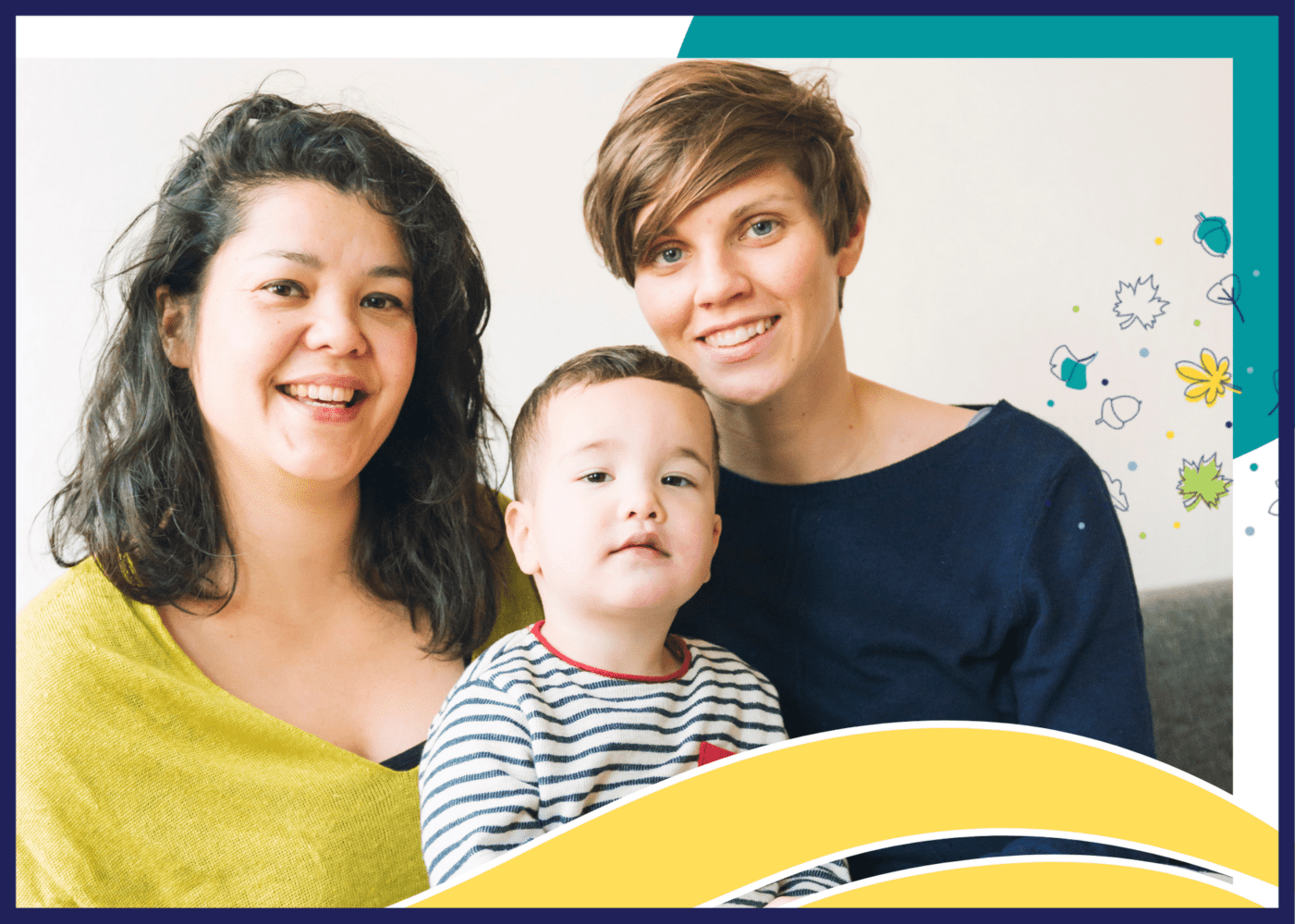Separation anxiety is the most common anxiety disorder in children under 12, and it can negatively impact the whole family system. It is normal and developmentally appropriate for young children to experience anxiety during separations when they are between 18 months and about 15 months old, and again when it is time to start school (around 4) and other major life transitions. However, separation anxiety can become problematic when it begins to disrupt and interrupt daily functioning and development.
This article is going to outline what separation anxiety looks like in children, what we generally know about anxiety, and some treatment options. I will also share some resources at the end to start giving parents some tools or things they can begin doing at home even if they are not accessing professional help yet.
Symptoms
Some of the symptoms of Separation Anxiety include:
- Distress, out of the ordinary reaction to separating from the attachment figure (usually parents or caregivers, from here on referred to just as caregiver)
- Excessive fears that something horrible will happen to their caregiver
- Worries about natural disasters, accidents, fires affecting their caregivers when separated
- Clinginess or refusal to leave the caregiver
- Excessive fears of being alone
- Nightmares about separation
- Physical complaints (stomach aches, headaches)
- Following parents around the house
- Unable to be alone even when parents are home, need to be with them at all times
- Trouble sleeping when parents are away, trouble falling asleep independently
- May not want to go to school, or extracurricular activities
- May want detailed timelines and ask for specific times when caregiver will return
These symptoms can really impact children, because the fear of being alone and imagining worst case scenarios (including death!) overtakes their systems. Children may be sad, withdrawn, have difficulty concentrating or focusing making it difficult to learn (fight/flight means our “smart brain” isn’t online). These children may also ruminate, being unable to detach from their worry thoughts, become physically sick (headaches, stomach aches, sometimes even nausea and vomiting!), and have trouble sleeping.
A special note about teens: teens with separation anxiety may show different signs. Instead of crying or clinginess, you might see behaviours like:
- repeated texts;
- Needing reassurance
- checking on your whereabouts or getting worried if you’re not back home when you said you would be;
- checking GPS tracking or using devices to track parents
- Wanting to stay home instead of going out with friends or peers
- Not wanting to go away overnight on trips or sleepovers
- Trouble staying at school all day, coming home early if attending at all
Of course, any time children become distressed or struggle, parents are faced with their own reactions. Such big anxiety and clinginess can make parents feel frustrated, stressed, or even exhausted. Parents may try to ignore the behaviour, but when it gets worse there may be no options but to give in and do what is possible to just make it stop. As a result, everyone in the home becomes affected. What may even happen is that parents may unintentionally reinforce the anxious behaviour by attending to it.
Diagnosis
Although a diagnosis isn’t necessarily needed to treat the symptoms once we understand the behavior and the emotions underneath, I do want to check in about what diagnosis means.
A diagnosis is something that a health professional (with the authority to diagnose) can give to a patient to identify what disorder is at play. In Ontario, only medical doctors (including your general practitioner, paediatrician, or psychiatrist) and psychologists have the authority to give a diagnosis. Of those, only medical doctors can prescribe medications to help manage the symptoms.
Diagnosing professionals use a manual called the Diagnostic and Statistical Manual (DSM 5) to identify and determine what an appropriate diagnosis might be. In terms of Separation Anxiety Disorder, the following criteria are outlined (for your education and interest only, not meant as a guide to self-diagnose!)
- Recurrent excessive distress when separation from home or major attachment figures occurs or is anticipated (including recurrent excessive distress, persistent or excessive worry, persistent and excessive reluctance to be alone, repeated nightmares etc)
- The fear, anxiety, or avoidance is persistent, lasting at least 4 weeks in children and adolescents and typically 6 months or more in adult
- The disturbance causes clinically significant distress or impairment in social, academic (occupational), or other important areas of functioning.
- The disturbance is not better explained by another mental disorder
(Source: NCBI Resources: DSM 5 Changes)
The themes here are persistent, excessive fear and distress, occurring over a period of time, and not better explained by another condition (there are other medical and psychological conditions that can appear like separation anxiety
Eli Lebowicz, PhD (Yale University professor, developer of the SPACE model) suggests referring to anxiety as a probem rather than a disorder. In his most recent book for parents Breaking Free of Child Anxiety and OCD, he says that “One reason to avoid the more clinical “anxiety disorder” is that a child does not have to have an actual disorder for the tools and strategies… to be helpful. Even if your child is only a little bit anxious, and would not meet formal diagnostic criteria for an anxiety disorder, you can still help [them] to cope better and be less anxious.”
At Acorn Counselling we do not have diagnosing professionals, but we can often work with parents and children to assess and collaborate with physicians if a diagnosis is indicated (like in complex cases where there are multiple stressors or conflicting presentations). We regularly share assessments and findings so that everyone involved in your family’s care is on the same page. We use a variety of screening tools, but we also understand that parents know their children best, and we can begin working with children and families even when a diagnosis isn’t present yet.
More about the Separation Anxiety problem
- Separation anxiety is the most common anxiety problem in children under 12
- About 4% of youth will suffer from a separation anxiety disorder (so many more without diagnosis or “disorder”).
- Normal in infants, and also in transitional stages, like entry into Kindergarten, middle school or high school.
- Might also occur after extended time away from school or extended time off routine, like after holidays, vacations, or lockdowns!
- It can equally affect anyone of any gender
- Adults can have separation anxiety as well. This can develop in adulthood, although for many adults with separation anxiety it started in childhood (36%)
We know about anxiety disorders, and separation anxiety too, that sometimes kids don’t just “grow out of it.” The good news is that anxiety is totally treatable.
When we say this, it does not mean that anxiety will go away – it is a natural part of our physiology and it actually helps keep us safe (when it is within normal levels). Also, your child’s temperament, biology and wiring, susceptibility to the environment will not necessarily change. But, anxiety can be easily treated so that it is not causing the same level of distress and disturbance, and your child (and whole family) can get back to living a happier and more fulfilling life.
Treatment
Separation anxiety is a fear of separating from an attachment figure that keeps a child safe and protected. There is an attachment component here. To help this separation anxiety problem, we want to ensure 3 things for the child:
- That they develop a sense of safety in their environment
- They develop trust in people other than their parents
- They trust that their attachment figure will return
There are many therapies that can help with separation anxiety problems, such as Play Therapy, Cognitive Behavioural (Play) Therapy, Sandtray, and more. There are also things that parents can do at home that can help.
During the pandemic, anxiety problems have greatly increased in both kids and adults. I would imagine this is because our world doesn’t feel safe, and so developing a sense of safety in the environment is more difficult. Many things are out of our control, and adults are also stressed, tired, and more anxious. While we continue navigating this new world, I am going to make a radical suggestion. Let’s play more!
Play helps us tolerate more activation in our systems. A racing heart or nervousness is easier to manage when we are having fun. It gets our body used to feeling that activation without associating it with something bad. Play also helps us feel connected to others, and allows us to build stronger relationships.
And, building this stronger relationship of connection and safety with the caregiver will allow them to eventually extend that sense of safety into their environment too.
What you can do at home
Here are some simple playful activities that you can start doing with your child at home now that can start exposing them to separation in a fun and connected way.
-
Hide & Seek
With younger kids this is like peek-a-boo. It is about separating, and then being found. Separating and then reconnecting. The joy of being found helps the child feel that even when they are away, they are still connected to parents.
For younger kids who are unable to separate, you can start by hiding and finding a stuffy. Work up from here to increase how far or extending to other rooms in the home, to even outside the home. Emphasize the joy in finding your child, give a big hug (if tolerated).
-
Scavenger Hunts
Allows kids to separate from parents with a specific mission, know parents are right there if needed, and they get to experience separation in a fun and rewarded way (finding the things). Get creative, from impromptu games (“Hmmm… I think I saw something shiny and purple around here somewhere… where did it go? Can you help me find it? I think it was right here… oh nope, not there… maybe here… ) to notes with instructions, to maps.
-
Build a Fort
This is a great way to work together on something concrete, building and creating. It allows the child to see their ideas come to life, and gives them a sense of control over their environment. Having one person be in the fort and one outside also flexes those separation muscles. Living room blanket forms can extend to tents in the yard.
-
Get outside
See if you can transfer some of these activities to the outdoors. Look up and try Geocaching for a low effort way to do scavenger hunts outside. This can help build safety in the environment (especially if you’re having fun) and a sense of connection to the world around us.
-
Creative connecting activities
You will have to use your creativity here. You can do things like building a tower, doing shared drawings or paintings, lego house. Take turns talking about things you love about your child, about each other, things that the child is great at, strengths. For example, building a lego house together, for each block take turns sharing something you love about your family until you have a house of strengths and examples of connection. Talk about how your house is so great and built on input and characteristics from each person, and how each block is valuable in the whole. Place the finished product (lego house, drawing) somewhere you can see it.
These are not new suggestions or things you haven’t heard of, but try to look at them through the lens of connection and exposure, as described above. Be in the moment, make the time for this connection and play, because it will help both you and your child. There are many therapeutic benefits of playing.
More resources
- 1. Parents, breath!
Find time to recharge your batteries so you can remain calm in the face of your child’s anxiety. Remember that anxiety problems can be treated, and they can get better. Your child is struggling, and with your presence, connection, and encouragement, they can build up their confidence and feel safer in the world.
- 2. Book: The invisible String
This is another book that talks about how we are all connected, even if we are not together. You can purchase or borrow from the library (another fun place outside to go and explore). Take time after reading this book to do an activity or see if your child has ideas about how to remember this string. See if you can get playful and pull out a string or ball or yarn to experiment with this at home. Use this same string or yarn to later make a bracelet your child can wear.
- 3. Book: The Kissing Hand
This is a cute book, and you can find a read-along online as well. Sometimes when children can see themselves in a story or character, and watch them build up and overcome their struggle, they too can internalize that and see that it is possible. Talk about it after, do something concrete together to remember this.
- 4. The book I mentioned above is helpful for parents working through anxiety in their family.
Breaking Free of Childhood Anxiety and OCD.
Remember that consistency is key, and that one activity or one week of effort may not dramatically change how your child is feeling. With consistent, intentional efforts to create a playful environment and focus on connection, your child will slowly begin to trust and relax enough to try things independently.
If you need additional support, please reach out to us. Within Acorn Counselling you can access:
- Anxiety email mini-course – sign up pending.
- Individual counselling for your child
- Parent support
- Family Therapy (including family Play Therapy)
- Taming Worry Dragons treatment group for children (and parents too!) More info here.
- SPACE program – currently offered as individual therapy for parents, and soon to be offered as a group
- Parents Mindfulness drop in group – facilitated by our current intern Krista MacKenzie.

By Anna Raworth, MSW RSW CPT
Executive Director at Acorn Counselling Centre Inc, and Child & Family Therapist at Acorn as well. Anna is also a Certified Play Therapist, and loves bringing play into work with families.





